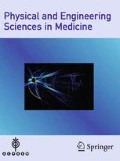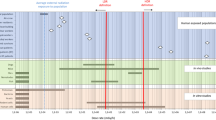Abstract
This paper reviews physical, experimental and epidemiological evidence for and against radiation hormesis and discusses implications with regards to radiation protection. The scientific community is still divided on the premise of radiation hormesis, with new literature published on a regular basis. The International Commission on Radiological Protection (ICRP) recommends the use of the Linear No Threshold (LNT) model, for planning radiation protection. This model states that the probability of induced cancer and hereditary effects increases with dose in a linear fashion. As a consequence, all radiation exposures must be justified and have a sufficient protection standard in place so that exposures are kept below certain dose limitations. The LNT model has sufficient evidence at high doses but has been extrapolated in a linear fashion to low dose regions with much less scientific evidence. Much experimentation has suggested discrepancies of this extrapolation at low doses. The hypothesis of radiation hormesis suggests low dose radiation is beneficial to the irradiated cell and organism. There is definite standing ground for the hormesis hypothesis both evolutionarily and biophy sic ally, but experimental evidence is yet to change official policies on this matter. Application of the LNT model has important radiation protection and general human health ramifications, and thus it is important that the matter be resolved.
Similar content being viewed by others
References
Coppes-Zantinga, A. R. and Coppes, M. J.,The early years of radiation protection: a tribute to Madame Curie, CMAJ 159(11), 1389–1391, 1998.
Edwards, M.,Development of Radiation Protection Standards, Radiographics 11(4), 699–712, 1991.
Macklis, R. M.,Radithor and the era of mild radium therapy, Jama 264(5), 614–618, 1990.
Rowland, R. E., Stehney A. F. and Lucas H. F., Jr.,Dose-response relationships for female radium dial workers, Radiat Res 76(2), 368–383, 1978.
Jones, C. G.,A review of the history of U.S. radiation protection regulations, recommendations, and standards, Health Phys 88(6), 697–716, 2005.
Muller, H. J.,The Measurement of Gene Mutation Rate in Drosophila, Its High Variability, and Its Dependence upon Temperature, Genetics 13(4), 279–357, 1928.
Muller, H. J.,The Production of Mutations by X-Rays, Proc Natl Acad Sci U S A 14(9), 714–726, 1928.
United Nations Scientific Committee on the Effects of Atomic Radiation (UNSCEAR). Report of the United Nations Scientific Committee on the Effects of Atomic Radiation. United Nations, New York; 1958.
International Commission of Radiological Protection (ICRP). Recommendations of the International Commission on Radiological Protection. Oxford, UK: Pergamon Press; 1959.
Hall E. J., Giaccia A. J. Radiobiology for the Radiologist. Philadelphia: Lippincott Williams & Wilkins; 2006.
International Commission of Radiological Protection (ICRP),The 2007 Recommendations of the International Commission on Radiological Protection (ICRP publication 103), Ann ICRP 37(2-4), 1–332, 2007.
Tubiana, M., Aurengo, A., Averbeck, D. and Masse, R.,The debate on the use of linear no threshold for assessing the effects of low doses, J Radiol Prot 26(3), 317–324, 2006.
Charles, M. W.,LNT — an apparent rather than a real controversy?, J Radiol Prot 26(3), 325–329, 2006.
Calabrese, E. J., Cook R. R.,Hormesis: how it could affect the risk assessment process, Hum Exp Toxicol 24(5), 265–270, 2005.
Macklis, R. M. and Beresford, B.,Radiation hormesis, J Nucl Med 32(2), 350–359, 1991.
Oberdorster, G., Oberdorster, E. and Oberdorster, J.,Nanotoxicology: an emerging discipline evolving from studies of ultrafine particles, Environ Health Perspect 113(7), 823–839, 2005.
Luckey, T. D.,Hormesis with ionizing radiation, Baca Raton: CRC press; 1980.
Furst, A.,Hormetic effects in pharmacology: pharmacological-inversions as prototypes for hormesis, Health Phys 52(5), 527–530, 1987.
Drake, J.W., Charlesworth, B., Charlesworth D. and Crow, J. F.,Rates of spontaneous mutation, Genetics 148(4), 1667–1686, 1998.
Eric, J. and Hall, A.J.G., Radiobiology for the radiologist: Lippincott Williams & Wilkins; 2006.
Feinendegen, L.E., Muhlensiepen, H., Bond, V.P. and Sondhaus C.A.,Intracellular stimulation of biochemical control mechanisms by low-dose, low-LET irradiation, Health Phys 52(5), 663–669, 1987.
Ikushima, T., Aritomi, H. and Morisita, J.,Radioadaptive response: efficient repair of radiation-induced DNA damage in adapted cells, Mutat Res 358(2), 193–198, 1996.
Stoilov, L.M., Mullenders, L.H., Darroudi, F. and Natarajan, A. T.,Adaptive response to DNA and chromosomal damage induced by X-rays in human blood lymphocytes, Mutagenesis 22(2), 117–122, 2007.
Azzam, E.I., de Toledo, S.M., Gooding, T. and Little, J.B.,Intercellular communication is involved in the bystander-regulation of gene expression in human cells exposed to very low fluences of alpha particles, Radiation research 150(5), 497–504, 1998.
Broome, E.J., Brown, D.L. and Mitchel, R.E.,Dose responses for adaption to low doses of (60)Co gamma rays and (3)H beta particles in normal human fibroblasts, Radiation research 158(2), 181–186, 2002.
Iyer, R. and Lehnert, B.E.,Alpha-particle-induced increases in the radioresistance of normal human bystander cells, Radiation research 157(1), 3–7, 2002.
Lyng, F.M., Seymour, C.B. and Mothersill, C,Initiation of apoptosis in cells exposed to medium from the progeny of irradiated cells: a possible mechanism for bystander-induced genomic instability?, Radiation research 157(4), 365–370, 2002.
Mothersill, C. and Seymour, C.,Radiation-induced bystander-effects: past history and future directions, Radiation research 155(6), 759–767, 2001.
Bond, V.P., Feinendegen, L.E. and Booz, J.,What is a low dose of radiation?, Int J Radiat Biol Relat Stud Phys Chem Med 53(1), 1–12, 1988.
Mitchel, R.E.,The bystander effect: recent developments and implications for understanding the dose response, Nonlinearity Biol Toxicol Med 2(3), 173–183, 2004.
Caratero, A., Courtade, M., Bonnet, L., Planel, H. and Caratero, C.,Effect of a continuous gamma irradiation at a very low dose on the life span of mice, Gerontology 44(5), 272–276, 1998.
Feinendegen, L.E.,Evidence for beneficial low level radiation effects and radiation hormesis, Br J Radiol 78(925), 3–7, 2005.
Duport, P.,A database of cancer induction by low-dose radiation in mammals: overview and initial observations, International journal of low radiation 1(1), 120–131, 2003.
Miyachi, Y.,Acute mild hypothermia caused by a low dose of X-irradiation induces a protective effect against mid-lethal doses of X-rays, and a low level concentration of ozone may act as a radiomimetic, Br J Radiol 73(867), 298–304, 2000.
Pathak, C.M., Avti, P.K., Kumar, S., Khanduja, K.L. and Sharma, S.C.,Whole body exposure to low-dose gamma radiation promotes kidney antioxidant status in Balb/c mice, J Radiat Res (Tokyo) 48(2), 113–120, 2007.
Ina, Y., Tanooka, H., Yamada, T. and Sakai, K., Suppression of thymic lymphoma induction by life-long low-dose-rate irradiation accompanied by immune activation in C57BL/6 mice, Radiat Res 163(2), 153–158, 2005.
Russ, V.K.,Consensus of the effect of X-rays on bacteria, Hygie 56(341–344, 1909.
UNSCEAR. Sources and effects of ionizing radiation. Vienna: United Nations Scientific Committee on the Effects of Atomic Radiation; 2000.
Mitchel, R.E., Jackson, J.S., Morrison, D.P. and Carlisle, S.M.,Low doses of radiation increase the latency of spontaneous lymphomas and spinal osteosarcomas in cancer-prone, radiation-sensitive Trp53 heterozygous mice, Radiation research 159(3), 320–327, 2003.
Biological Effects of Ionizing Radiation (BEIR). Health risks from exposures to low level radiation: BEIR VII Phase 2. Washington: The National Academic Press; 2005.
Abbat, J.D.,Epidemiological studying three corporations-covering the Canadian nuclear fuel cycle; Biological effects of low level radiation, IAEA 351, 1983.
UNSCEAR. Sources and effects of ionizing radiation. United Nations, New York: United Nations Scientific Committee on the Effects of Atomic Radiation 1994.
Jagger, J.,Natural background radiation and cancer death in Rocky Mountain states and Gulf Coast states, Health Phys 75(4), 428–430, 1998.
Cohen, B. L.,Lung cancer rate vs. mean radon level in U.S. counties of various characteristics, Health Phys 72(1), 114–119. 1997.
Ghiassi-nejad, M., Mortazavi, S.M., Cameron, J.R., Niroomand-rad, A. and Karam, P.A.,Very high background radiation areas of Ramsar, Iran: preliminary biological studies, Health Phys 82(1), 87–93, 2002.
UNSCEAR 2000. The United Nations Scientific Committee on the Effects of Atomic Radiation, Health Phys 79(3), 314, 2000.
Mohammadi, S., Taghavi-Dehaghani, M., Gharaati, M. R., Masoomi, R. and Ghiassi-Nejad, M.,Adaptive response of blood lymphocytes of inhabitants residing in high background radiation areas of ramsar-micronuclei, apoptosis and comet assays, J Radiat Res (Tokyo) 47(3-4), 279–285, 2006.
Tubiana, M., Aurengo, A.,Dose-effect relationship and estimation of the carcinogenic effects of low doses of ionising radiation: the Joint Report of the Academie des Sciences (Paris) and of the Académie Nationale de Medecine, International Journal of Low Radiation 2(3/4), 135–153, 2006.
International Commission of Radioloulgical Protection (ICRP),Recommendations of the International Commission on Radiological Protection (ICRP publication 60), Ann ICRP 21(1–3), 1991.
Muirhead C. R., O’Hagan J. A., Haylock R. G., Phillipson M. A., Willcock T., Berridge G. L., Zhang W., “Mortality and cancer incidence following occupational radiation exposure: third analysis of the National R egistry for R adiation Workers,” Br J Cancer 100(1), 206–212, 2009.
Kiesselbach, N., Ulm, K., Lange, H.J. and Korallus, U.,A multicentre mortality study of workers exposed to ethylene oxide, Br J Ind Med 47(3), 182–188, 1990.
Pasetto, R., Biggeri, A., Comba, P. and Pirastu, R.,[Mortality in the cohort of workers of the petrochemical plant in Gela (Sicily) 1960-2002], Epidemiol Prev 31(1), 39–45, 2007.
Andjelkovich, D.A., Janszen, D.B., Brown, M.H., Richardson. R.B. and Miller, F.J.,Mortality of iron foundry workers: IV. Analysis of a subcohort exposed to formaldehyde, J Occup Environ Med 37(7), 826–837, 1995.
Field, R.W., Krewski, D., Lubin, J.H., Zielinski, J.M., Alavanja, M., Catalan, V.S., Klotz, J.B., Letourneau, E.G., Lynch, C.F., Lyon, J.L., Sandler, D.P., Schoenberg, J.B., Steck, D.J., Stolwijk, J.A., Weinberg, C., Wilcox, H.B.,An overview of the North American residential radon and lung cancer case-control studies, J Toxicol Environ Health A 69(7), 599–631, 2006.
Darby, S., Hill, D., Auvinen, A., Barros-Dios, J.M., Baysson, H., Bochicchio, F., Deo, H., Falk, R., Forastiere, F., Hakama, M., Heid, I., Kreienbrock, L., Kreuzer, M., Lagarde, F., Makelainen, I., Muirhead, C., Oberaigner, W., Pershagen, G., Ruano-Ravina, A., Ruosteenoja, E., Rosario, A.S., Tirmarche, M., Tomasek, L., Whitley, E., Wichmann, H.E. and Doll, R.,Radon in homes and risk of lung cancer: collaborative analysis of individual data from 13 European case-control studies, BMJ 330(7485), 223, 2005.
Rapid response to: Domestic radon, smoking and lung cancer by Darby et al. BMJ: available at: http://www.bmi.com/ cgi/content/abstract/bmj.38308.477650.63vl?maxtoshow=&H ITS=10&hits=10&RESULTFORMAT=&fulltext=radon&and orexactfulltext=and&searchid=l 104088930302 1095&stored search=&FIRSTINDEX=0&sortspec=relevance&resourcetyp e=l, 2004.
Pawel, D.J. and Puskin, J.S.,The U.S. Environmental-Protection Agency s assessment of risks from indoor radon, Health Phys 87(1), 68–74, 2004.
Thompson, R.E., Nelson, D.F., Popkin, J.H. and Popkin, Z.,Case control study of lung cancer risk from residential radon exposure in Worcester County, Massachusetts, Health Physics 94(228–241, 2008.
Luckey, T.D.,Radiation hormesis: the good, the bad, and the ugly, Dose Response 4(3), 169–190, 2006.
Renn, O.,Implications of the hormesis hypothesis for risk perception and communication, Human & Experimental Toxicology 17(8), 431–438, 1998.
Golay, M.W.,Improved nuclear power plant operations and safety through performance-based safety regulation, J Hazard Mater 71(1-3), 219–237, 2000.
Deutch, J. and Moniz, E.J.,Future of Nuclear Power: an interdisciplinary MIT study: Massachusetts Institute of Technology (MIT); 2003.
International Atomic Energy Agency (IAEA),Power Reactor Information System (PRIS), 2000, http://www.iaea.org/programmes/a2/, accessed 3 April 2009.
Day, T.K., Zeng, G., Hooker, A.M., Bhat, M., Scott, B.R., Turner, D.R. and Sykes, P. J.,Extremely low priming doses of X radiation induce an adaptive response for chromosomal inversions in pKZI mouse prostate, Radiat Res 166(5), 757–766, 2006.
Prehn, R.T. and Berd, D.,Whipsaw cancer treatments: The role of hormesis in endocrine and immune therapies, Semin Oncol 33(6), 708–710, 2006.
Author information
Authors and Affiliations
Corresponding author
Rights and permissions
About this article
Cite this article
Jolly, D., Meyer, J. A brief review of radiation hormesis. Australas. Phys. Eng. Sci. Med. 32, 180–187 (2009). https://doi.org/10.1007/BF03179237
Received:
Accepted:
Issue Date:
DOI: https://doi.org/10.1007/BF03179237



